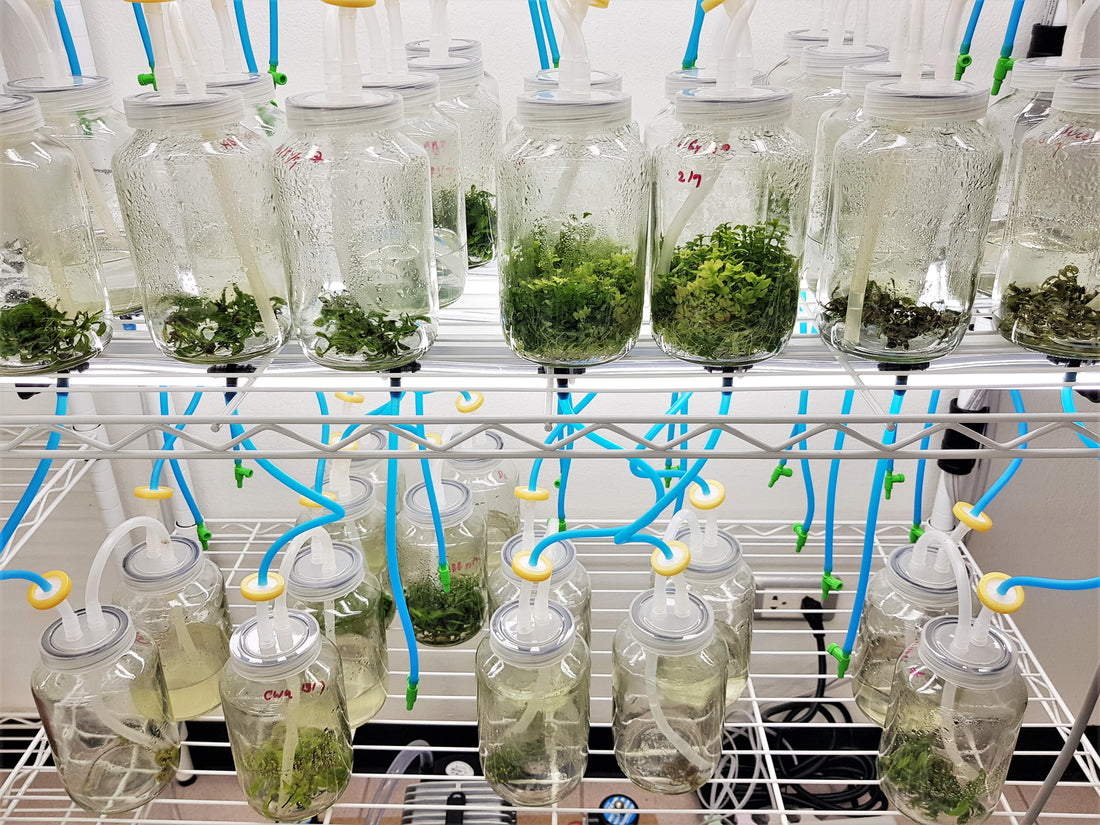
Temporary Immersion Bioreactors
As a content and community manager, I leverage my expertise in plant biotechnology, passion for tissue culture, and writing skills to create compelling articles, simplifying intricate scientific concepts, and address your inquiries. As a dedicated science communicator, I strive to spark curiosity and foster a love for science in my audience.


Tissue culture is a useful technique to produce high-quality plants or plants with desired characteristics on large scale. The problem associated with the technique is the requirement of intensive labor, trained workers, higher general overhead cost, and cost per unit space in the growth room. The large scale propagation by tissue culture can be improved by scaling up the production system and automation of unit operations. It will also reduce the cost involved in the whole process.
The peculiar method to propagate differentiated and undifferentiated plant cultures at a large scale is by putting them in liquid media under controlled environmental conditions in bioreactor systems. Bioreactors are vessels or devices that are designed to support a biologically active environment for the proper growth of cultures at a large scale. This is done through regulation of various physical and chemical processes. These systems help to scale-up the production rate, ease the multiplication process, and lower the production cost.
The types of bioreactors include air-lift, stirred tank, rotating drum, column, etc. These bioreactors are classified into four classes: liquid‐phase bioreactors, gas‐phase bioreactors, temporary immersion systems (TIS), and hybrid bioreactors. The bioreactors allow monitoring and control of the micro-environment of cultures including agitation, speed, aeration, illumination regime, dissolved oxygen and carbon dioxide concentration, temperature, and pH of the liquid medium.
Liquid phase bioreactors are the most studied bioreactors in terms of tissue culture. In liquid-phase bioreactors, the cells are in the submerged state in the media. The most popular liquid-phase bioreactors are mechanically agitated, pneumatically agitated, hydraulically agitated, and membrane bioreactors. These bioreactors serve several applications in the tissue culture area. However, the major limitation of liquid phase bioreactors is vitrification or hyperhydricity of plant tissues. This causes malformations and loss of material in cultures.
How to Recognize Vitrification
The symptoms of vitrification include chlorophyll deficiency, cell hyperhydricity, hypolignification, reduced deposition of epicuticular waxes, and changes in enzymatic activity and protein synthesis.
To avoid the problems generated by the liquid-phase bioreactors, there are many alternative bioreactors. Temporary immersion bioreactors are popular because of their simplicity, high productivity, improved nutrients and gas transfer, and minimum physiological disorders by lowering mechanical stress.
What are Temporary Immersion Bioreactors?
Temporary bioreactors are the systems in which the entire culture or plant tissue is wetted with nutrient solution and then the excess nutrient is drained so that proper aeration is provided to the cultured tissue.
History of Temporary Immersion Bioractors
It is believed that the idea of designing temporary immersion bioreactors came in 1965. A scientist named Heller showed that just providing the up-and-down motion to the nutrient media showed the same effect as the true renewal suspension systems. Then in 1985, Tisserat and Vandercook first applied the idea of temporary immersion by creating a large elevated chamber in which media was drained and then freshly added at particular intervals. The modern automated temporary bioreactors system was designed by Simonton et al. In this system, a liquid medium was added to the cultured explants according to the selected schedule.
Advantages of Temporary Immersion Bioreactors
So far, you must have got an idea about temporary immersion bioreactors, what they are, how they are better than the liquid-phase bioreactors, and a historical overview of designing these immersion bioreactors. Now, you may ask that at what extent these immersion bioreactors can be useful for your tissue culture applications. So, let's have a look at the following points to understand the major advantageous features of the temporary immersion bioreactors (TIS):
- The physiological disorders can be minimized by using the temporary immersion bioreactors as the explants to be cultured are required to put in the immersed liquid medium only for 5-10 minutes every 3 to 6 hours. This keeps the plants healthier and protects them from vitrification.
- The frequency and duration of immersing the culture explants can be manipulated to control the growth and development of plants.
- When nutrient media is introduced in the cultures, it forms a thin film of liquid covering the entire culture that improves the growth of the plants. This is done during every interval of the media introduction to cultures.
- The specialized air vents attached to the vessel protect the cultures from contamination.
- The mechanical stress in the cultured plants is lowered due to lack of agitation or aeration. This stress is comparatively higher in the other bioreactors.
Setting up Temporary Immersion Bioreactors in your lab
The Plant Cell Technology has created a video on setting up the temporary immersion bioreactors in your lab. You can watch and learn the procedural steps to set up the system in your lab. Plant Cell Technology is creating many educational videos to teach you the basics of plant tissue culture. It’s also providing several practical videos on setting up your lab, installing the equipment in the tissue culture lab, etc. Watch the videos to enhance your understanding of plant tissue culture.
References
- Afreen, F. (n.d.). Temporary Immersion Bioreactor. Focus on Biotechnology, 187–201. doi:10.1007/978-1-4020-3694-1_11
- Georgiev, V., Schumann, A., Pavlov, A. and Bley, T. (2014), Temporary immersion systems in plant biotechnology. Eng. Life Sci., 14: 607-621. https://doi.org/10.1002/elsc.201300166
- https://www.youtube.com/channel/UC5lmMbHaN5q_YeV4N...
- https://www.plantcelltechnology.com/blog/
Blog Categories
View by Level
Popular Blogs

How Samantha Bridges the Gap Between the Nursery and the Lab
The Introduction Building a tissue culture program from the ground up requires more than just scientific knowledge—it requires the grit...
Read More
Understanding The Synthetic Seed Technology
Introduction Let’s be honest: traditional plant propagation can be a logistical nightmare. If you’re working with recalcitrant species—those stubborn plants...
Read MoreSubscribe to Our Newsletter








Join the conversation
Your email address will not be published. Required fields are marked